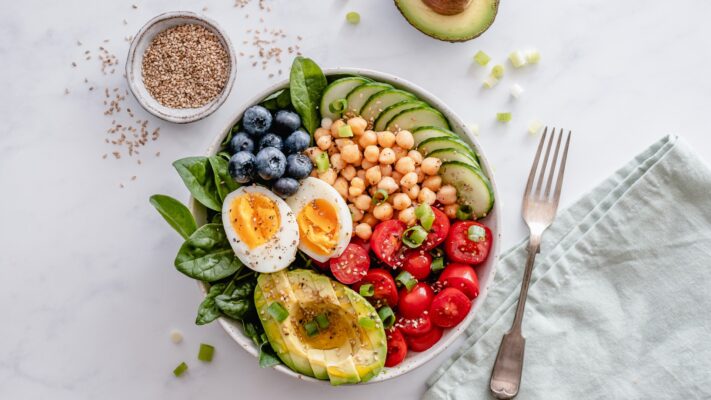High blood pressure, also known as hypertension, is a common health issue that can lead to serious complications like heart disease, stroke, and kidney failure. Managing high blood pressure often involves lifestyle changes, including diet modifications. This article provides a comprehensive 7-day diet plan specifically designed to help control high blood pressure, based on the principles of the DASH (Dietary Approaches to Stop Hypertension) diet.
Understanding the DASH Diet
The DASH diet is an evidence-based eating plan specifically created to lower blood pressure. It emphasizes the consumption of fruits, vegetables, whole grains, lean proteins, and low-fat dairy while limiting the intake of salt, red meat, and added sugars. Key components of the DASH diet include:
- High Intake of Fruits and Vegetables: These are rich in potassium, which helps balance the sodium levels in the body.
- Whole Grains: Provide fiber, which is beneficial for heart health.
- Low-Fat Dairy: Sources of calcium and protein.
- Lean Proteins: Including poultry, fish, and plant-based proteins.
- Reduced Sodium: Keeping sodium intake to a minimum to help lower blood pressure.
7-Day Diet Plan for High Blood Pressure
Day 1
Breakfast:
- Oatmeal topped with fresh berries and a sprinkle of chia seeds.
- A glass of low-fat milk.
Mid-Morning Snack:
- A small apple and a handful of unsalted almonds.
Lunch:
- Grilled chicken breast salad with mixed greens, cherry tomatoes, cucumbers, and a vinaigrette dressing.
- A slice of whole grain bread.
Afternoon Snack:
- Carrot and celery sticks with hummus.
Dinner:
- Baked salmon with a side of steamed broccoli and quinoa.
- Mixed fruit salad for dessert.
Day 2
Breakfast:
- Greek yogurt with sliced banana, a handful of granola, and a drizzle of honey.
Mid-Morning Snack:
- A pear and a small handful of walnuts.
Lunch:
- Lentil soup with a side of whole grain crackers.
- Mixed green salad with olive oil and lemon dressing.
Afternoon Snack:
- Sliced bell peppers with guacamole.
Dinner:
- Grilled turkey breast with roasted Brussels sprouts and sweet potato.
- A small bowl of mixed berries.
Day 3
Breakfast:
- Smoothie made with spinach, frozen berries, banana, and almond milk.
Mid-Morning Snack:
- A small orange and a handful of pumpkin seeds.
Lunch:
- Whole grain wrap with hummus, grilled vegetables, and spinach.
- A small side of fruit salad.
Afternoon Snack:
- Low-fat cottage cheese with pineapple chunks.
Dinner:
- Stir-fried tofu with mixed vegetables (broccoli, bell peppers, carrots) served over brown rice.
- A side of steamed asparagus.
Day 4
Breakfast:
- Whole grain toast with avocado and a poached egg.
- A small glass of low-sodium vegetable juice.
Mid-Morning Snack:
- A peach and a small handful of sunflower seeds.
Lunch:
- Quinoa salad with black beans, corn, diced tomatoes, avocado, and lime dressing.
- A slice of whole grain bread.
Afternoon Snack:
- Sliced cucumbers and cherry tomatoes with a low-fat yogurt dip.
Dinner:
- Baked chicken breast with a side of green beans and mashed cauliflower.
- Fresh fruit for dessert.
Day 5
Breakfast:
- Whole grain waffles topped with fresh strawberries and a dollop of low-fat yogurt.
Mid-Morning Snack:
- An apple and a small handful of almonds.
Lunch:
- Spinach and chickpea salad with a balsamic vinaigrette.
- A side of whole grain pita bread.
Afternoon Snack:
- A small bowl of mixed berries.
Dinner:
- Grilled shrimp with a side of quinoa and sautéed spinach.
- A small serving of mixed fruit.
Day 6
Breakfast:
- Scrambled eggs with spinach and tomatoes.
- A slice of whole grain toast.
Mid-Morning Snack:
- A small orange and a handful of unsalted pistachios.
Lunch:
- Turkey and avocado wrap with whole grain tortilla.
- Mixed green salad with olive oil and lemon dressing.
Afternoon Snack:
- Sliced bell peppers and carrot sticks with hummus.
Dinner:
- Baked cod with a side of roasted vegetables (zucchini, bell peppers, and carrots) and brown rice.
- Fresh fruit salad for dessert.
Day 7
Breakfast:
- Greek yogurt parfait with mixed berries and a sprinkle of granola.
Mid-Morning Snack:
- A pear and a handful of walnuts.
Lunch:
- Mixed bean salad with chickpeas, black beans, kidney beans, diced tomatoes, cucumbers, and a vinaigrette dressing.
- A slice of whole grain bread.
Afternoon Snack:
- A small bowl of mixed fruit.
Dinner:
- Grilled chicken breast with a side of steamed broccoli and quinoa.
- Fresh fruit for dessert.
Additional Tips for Managing High Blood Pressure
- Reduce Sodium Intake: Aim to consume no more than 2,300 milligrams of sodium per day, and ideally reduce it to 1,500 milligrams.
- Increase Potassium Intake: Foods rich in potassium help balance the effects of sodium and are beneficial for blood pressure control.
- Exercise Regularly: Physical activity helps reduce blood pressure. Aim for at least 150 minutes of moderate-intensity exercise per week.
- Maintain a Healthy Weight: Weight loss can significantly impact blood pressure, especially if you are overweight.
- Manage Stress: Chronic stress can contribute to high blood pressure. Practice relaxation techniques such as meditation, deep breathing, or yoga.
- Avoid Smoking: Smoking increases blood pressure and the risk of heart disease.
- Limit Alcohol Consumption: Excessive alcohol can raise blood pressure. Men should limit intake to no more than two drinks per day.
Conclusion
Managing high blood pressure through diet is a powerful approach that can significantly reduce health risks. The 7-day diet plan provided in this guide emphasizes nutrient-dense foods that support cardiovascular health, including plenty of fruits, vegetables, whole grains, and lean proteins while minimizing sodium, added sugars, and unhealthy fats. By following these dietary recommendations and incorporating healthy lifestyle habits, you can take control of your blood pressure and improve your overall health.





